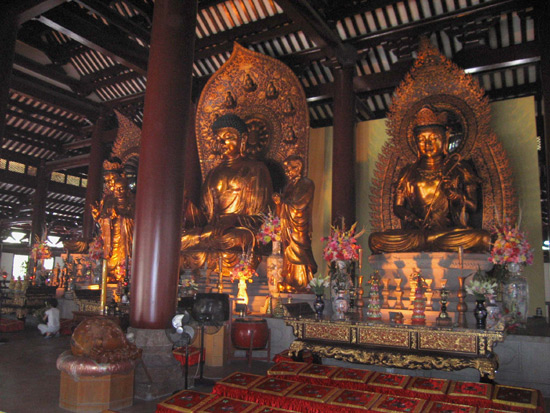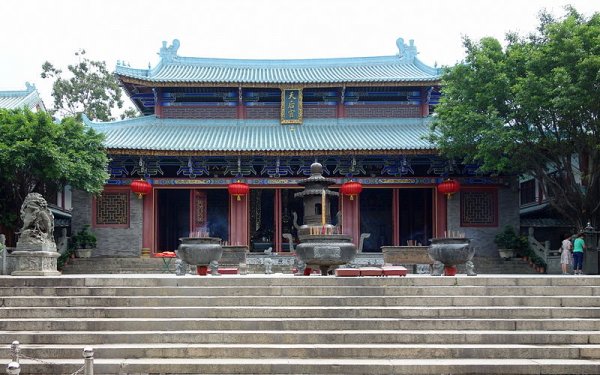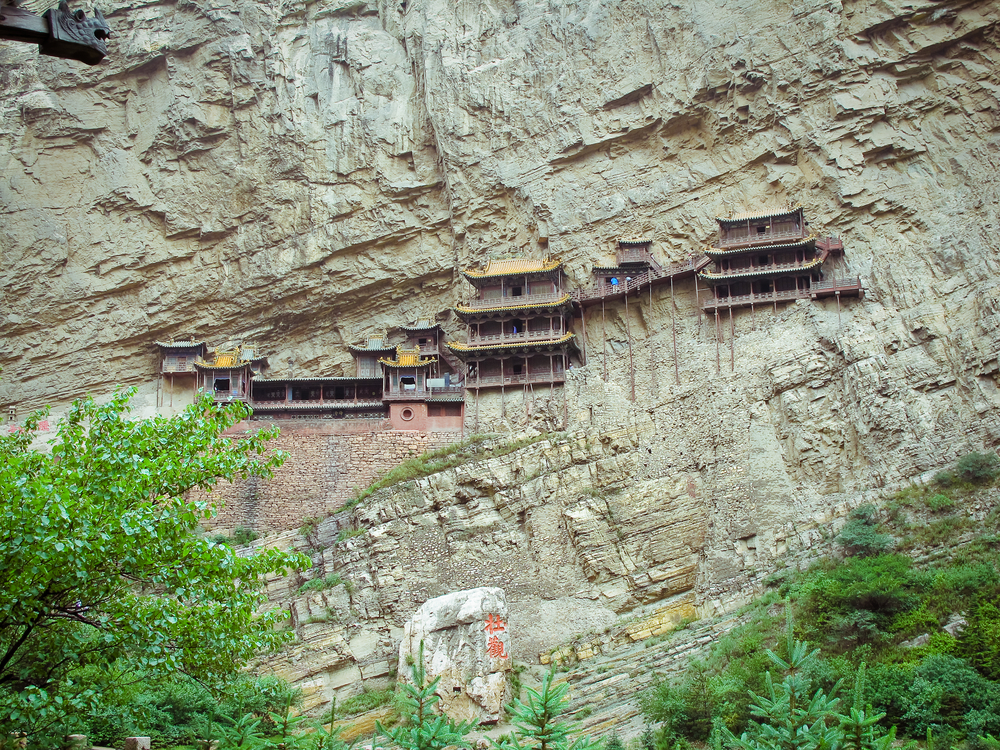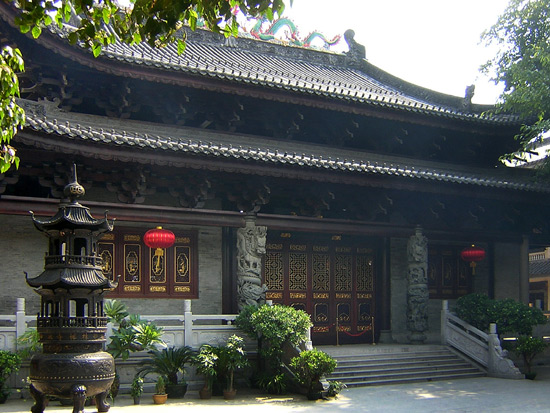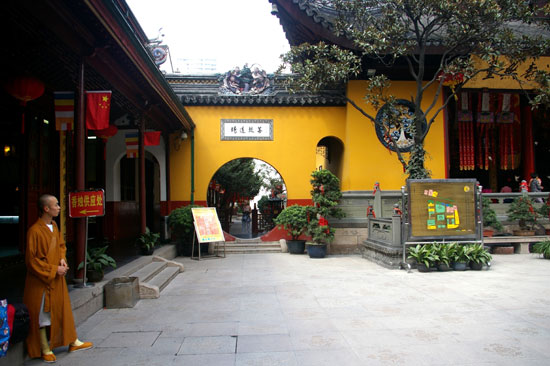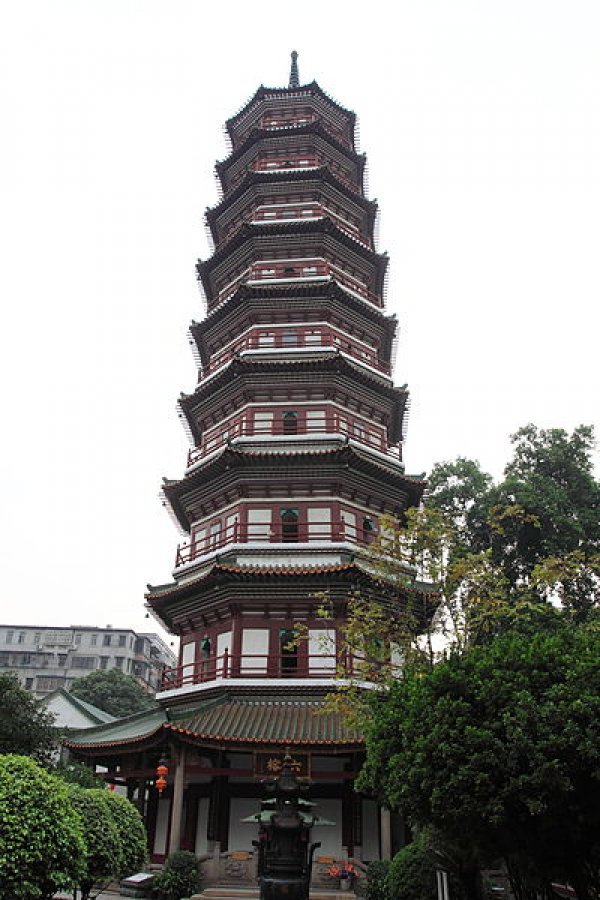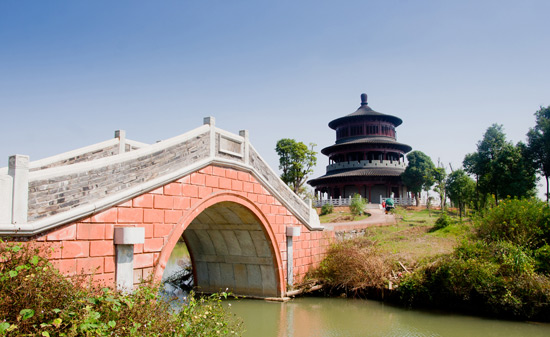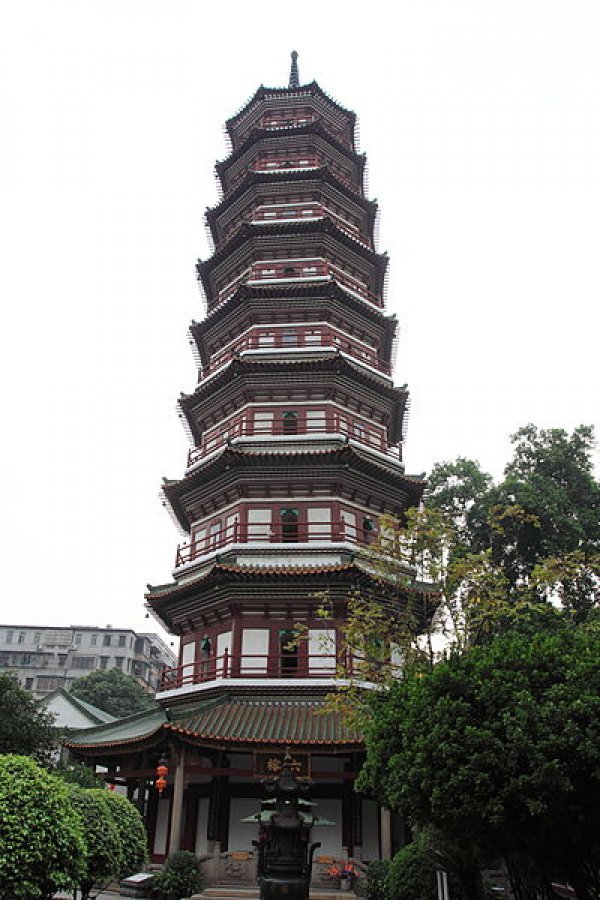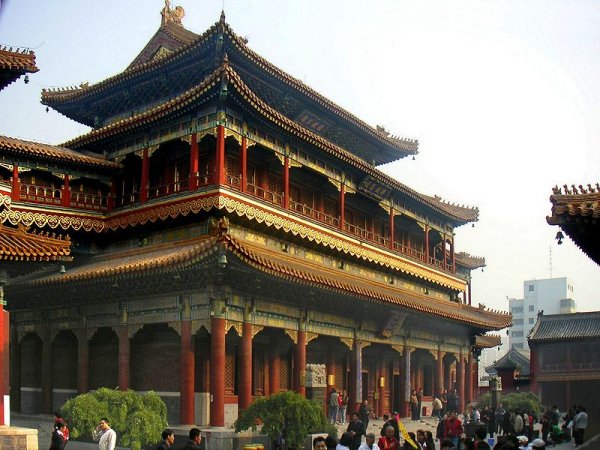Points of Interest
Bright Filial Piety Temple
109 Guangxiao Lu
Guangzhou, China
According to legend, this important Zen Buddhist temple's long history dates back to before the founding of Guangzhou itself! Built sometime during the Western Han Dynasty, the temple served multiple functions over the years, including private residence and educational institute, before being converted into a shrine. The Guangxiao Si constitutes one of the most important Zen Buddhist centers in all of China and was the site of Zen master Daijan Huineng initiation. Be sure to check out the two iron pagodas that flank the temple. Dating back to the 960s CE, they are believed to be the most ancient of their kind in China.
Chiwan Tian Hou Temple
Sekou Nanshan District Chiwan
Shenzhen, China
This temple dedicated to the worship of Tian Hou, the Chinese goddess of the sea, is one of the oldest religious sites in Shenzhen. Sitting atop a hill above Nanshan Peninsula, overlooking Shenzhen Bay, the temple dates to the early 1400s, although there has purportedly been some kind of temple on the site since sometime in the Southern Song Dynasty (1127–1279 CE). Typically Chinese upturned roof corners on its two-tiered buildings characterize the temple, although many of the structures feel more modern, having been constructed of stone rather than wood. There are also two small, murky pools at one corner of the grounds, which flank a bronze statue of Tian Hou herself. Though certainly not the grandest temple in China, this shrine makes for a convenient look into the history and religious traditions of the people of the Shenzhen region.
Hanging Temple
Mount Heng
Shanxi, China
The Hanging Temple is a Buddhist temple built into the west cliff of the Jinxia Gorge, at the foot of Mount Heng. Built in 491, the Hanging monastery is an architectural wonder that blends a unique mechanical theory with aesthetics. It is a very big temple, with 40 cabinets and halls that contain about 80 sculptures made of stone, iron, copper, and terracotta. Due to its unique location, the temple is protected from the damage caused by rain, snow, and sunlight. Another reason for its unique location is that it helps maintain an important Taoist belief, absolute quietness.
Hualin Temple
31 Shangxiajiu
Guangzhou, China
This rather underappreciated gem of an ancient Buddhist temple sits in the middle of the busy Hualin Jade Street market. Built sometime during the Southern Dynasties period, the ancient temple has stood here for around 1,400 years. Expanded during the 1600s, it was officially renamed Hualin. The interior of the temple features a wonderful collection of golden statues of arhats (enlightened entities of Buddhism), each with its own delightfully unique facial expression and body language. A statue of famed explorer Marco Polo stands at one end of the room, and the treasured white dolomite dagoba that stands outside is said to house relics of the Buddha.
Jade Buddha Temple
170 Anyuan Road
Shanghai, China
Jade Buddha Temple was founded in 1882 with two jade Buddha statues brought from Burma. These original two are a sitting Buddha statue that is 2 meters (6.5 feet) tall and weighs 3 tons; and a smaller reclining Buddha. The temple is a reflection of both the Chan and Pure Land traditions of Mahayana Buddhism. At present, the temple consists of two main halls, the Chamber of Four Heavenly Kings and the Grand Hall (or Great Hall), which contain a number of statues. The temple is also home to the Shanghai Institute of Buddhism.
Jing'an Temple
Temple of Peace and Tranquility 1686 Nanjing Road West
Shanghai, China
Jing'an Temple (Temple of Peace and Tranquility) is a Buddhist temple that was originally located beside Suzhou Creek but is now situated on West Nanjing Road. Built in 247 CE, the temple includes four main halls, namely Hall of Heavenly Kings, Hall of the Three Saints, Hall of Virtuous Works, and Precious Hall of the Great Hero. Two other halls, the Guanyin Hall and Jade Buddha Hall, contain huge statues of the goddess and jade Buddha respectively. While the statue of the goddess weighs five tons and stands 6.2 meters (20.3 feet) tall, the jade Buddha statue stands 3.8 m (12.5 ft) tall.
Jinlun Guild Hall
289 Kangwang South Lu
Guangzhou, China
This lesser-known temple is small and mostly empty but rife with history, making it an interesting quick stop on a walking tour of the Liwan District. Constructed in 1723, this is the last of what was once a large collection of guildhalls in Guangzhou. Built in the style of an ancestral temple, this guildhall served as the main offices for the silk traders' association during the Qing Dynasty. The hall today exhibits only a few silk embroideries and some dusty paintings for sale, but fascinates as a well preserved historic and architectural gem. Interestingly, in 2001, the entire hall was disassembled and carefully reconstructed 80 meters (262 feet) north of its original location to make way for a new street.
Six Banyan Monastery
Liurong Road
Guangzhou, China
The Temple of Six-Banyan Trees is a Buddhist temple in Guangzhou that was built in 573 by the Liang Dynasty. During its 1,400-year history, it was rebuilt and renamed several times. The temple's pagoda, known variously as the Flowery Pagoda or Six Banyan Pagoda, was built in 1097 and is shaped like a flower, hence its name. The temple consists of three halls, the Tianwang Hall, which contains a statue of the Laughing Buddha; the Weituo Hall; and the main Daxiong Baodian Hall, which holds three huge ancient copper Buddhist statues. The temple hosts huge crowds during the Spring and Lantern festivals, when devotees burn incense to seek divine blessings.
Temple of Heaven
Tian Tan North Road
Xuanwu District
Beijing, China
The Temple of Heaven is a group of Taoist buildings built in 1420 that were highly regarded as places of worship. Twice a year, in spring and at the winter solstice, the emperor would travel there with his entourage to pray for good harvests. The temple grounds consist of 2.73 square kilometers (1.05 square miles) of parkland with inner and outer temples. The most magnificent building is the Hall of Prayer for Good Harvests, a triple-gabled building with a circular shape and containing three levels of marble at the base. The semi-circular shape of the northern wall and the square shape of the southern wall represent heaven (round) and earth (square).
Temple of Heaven
Tian Tan North Road
Xuanwu District
Beijing, China
The Temple of Heaven (Altar of Heaven) is a group of Daoist buildings built in 1420 that were highly regarded as places of worship. Twice a year, in spring and at the winter solstice, the emperor would travel there with his entourage to pray for good harvests. The temple grounds consist of 2.7 hectares (6.7 acres) of parkland with inner and outer temples. The most magnificent building is the Hall of Prayer for Good Harvests, a triple-gabled building with a circular shape and containing three levels of marble at the base. The semi-circular shape of the northern wall and the square shape of the southern wall represent heaven (round) and earth (square).
Temple of Six Banyan Trees
Liurong Road
Guangzhou, China
This Buddhist temple was built in 573 by the Liang Dynasty. During its 1,400-year history, it was rebuilt and renamed several times. The temple's pagoda, known variously as the Flowery Pagoda or Six-Banyan Pagoda, was built in 1097 and is shaped like a flower, hence its name. The temple consists of three halls, the Tianwang Hall, which contains a statue of the Laughing Buddha; the Weituo Hall; and the main Daxiong Baodian Hall, which holds three huge ancient copper Buddhist statues. The temple hosts huge crowds during the Spring and Lantern festivals, when devotees burn incense to seek divine blessings.
Yonghe Temple
12 Yonghegong Dajie
Beijing, China
Yonghe Temple, or Lama Temple as it is popularly known, was built in 1694 and is a temple and monastery of the Geluk School of Tibetan Buddhism. Formerly an imperial palace, it is one of the biggest and most significant Tibetan Buddhist monasteries in the world. It consists of five main halls, Hall of the Heavenly Kings, Hall of Harmony and Peace, Hall of Everlasting Protection, Hall of the Wheel of the Law, and Pavilion of Ten Thousand Happinesses. Each of these halls contains a number of statues and other religious objects, like a statue of the Maitreya Buddha that stands 18 meters (59 feet) tall and is made entirely out of a single piece of white sandalwood.
Copyright © 1993—2025 World Trade Press. All rights reserved.

 China
China 